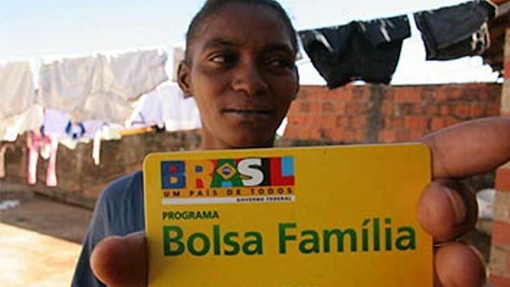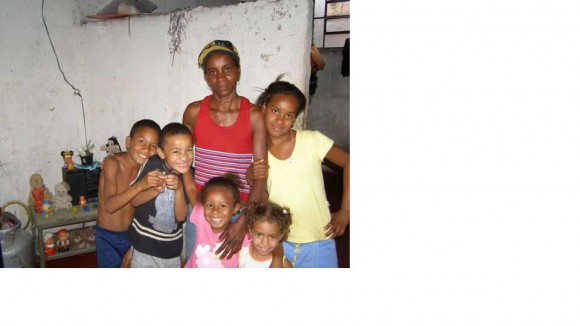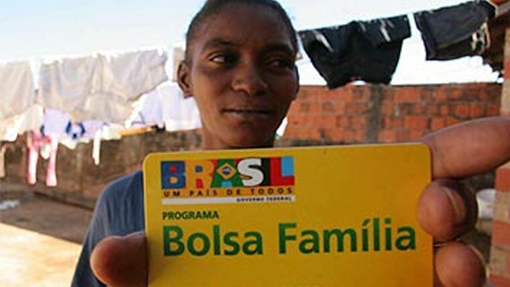Giving away money to the poor may not seem like the most original or effective way to alleviate poverty, but, by most accounts, it has worked spectacularly well for Brazil and Mexico. Brazil’s Bolsa Familia (Portuguese for “Family Grant”) and Mexico’s Oportunidades (formerly Progresa) are conditional cash transfer (CCT) programs that have slashed poverty and inequality and been widely emulated in other developing countries.
Fighting Poverty, Building Capacities
Bolsa Familia and Oportunidades have succeeded in lifting millions of families out of poverty, improving the health of children and their mothers, bolstering literacy rates, and reducing inequality. A World Bank assessment found that Oportunidades reduced the poverty headcount among participants by 4.9 percent in the first year and 18 percent in the second year. Brazil’s government puts the number of Brazilians liberated from poverty thanks to Bolsa Familia at around 20 million people by about 2010. Though care must be taken in distinguishing the impact of Bolsa Familia from the larger role that economic development has played in alleviating poverty in many developing countries, particularly other BRIC Countries like China and India.
Bolsa Familia participants under age five are 26 percent more likely to have healthy height-to-weight and weight-to-age ratios than those not in the program. Half a million beneficiaries of Bolsa Familia became literate in 2006 and 2007, according to data from the Brazilian Secretariat of Social Information (SECOM).
The modest transfer amounts and small overall outlay make the success of CCT programs like Bosla Familia all-the-more impressive. While Bolsa Familia benefits nearly a quarter of Brazil’s population of some 190 million people, the average grant is just a fifth of Brazil’s minimum wage, resulting in a total spend of about 0.4 percent of GDP. By comparison, Brazil devotes about four times this amount (1.6 percent of GDP) to defense spending.
Conditional Cash Transfer (CCT) Programs: Goals and Origins
Conditional cash transfer (CCT) programs like Bolsa Familia and Oportunidades have two principal aims: 1) to alleviate poverty; and 2) to break the cycle of poverty that is too often and easily passed on from one generation to the next.
In their best form, CCTs can provide a path out of poverty through education and training programs that build skills and links to employment opportunities. In reality, the immediate goal of poverty alleviation has generally been easier to accomplish than the longer term objective of breaking the poverty cycle.
Bolsa Familia
Brazil’s Bolsa Familia program took shape in 2003, early in the first term of Brazilian President Luiz Inácio Lula da Silva. Bolsa Familia grew out of the merger of four major cash transfer programs: Bolsa Escola, an income grant for primary education; Fome Zero and Bolsa Alimentação, two income grants related to food security; and Vale Gás, a subsidy to help poor households buy cooking gas.
By the end of 2006, Bolsa Família had already scaled up to reach 11 million Brazilian households. Today, the program benefits more than 12 million poor and very poor families in Brazil.
Oportunidades
Bolsa Familia is fashioned after Mexico’s pioneering Education, Health and Food Programme known as Progresa, which evolved into Oportunidades in 2001. Launched in 1997, Progresa provided cash, food supplements and access to basic health services to rural families living in extreme poverty.
Two Mexican social scientists, Santiago Levy and Jose Gomez de Leon, have been credited with designing Progresa/Oportunidades, which many consider one of the most successful poverty alleviation programs in Latin American history.
Conditions of Participation
One key to the success of Bolsa Familia, Oportunidades and other CCTs is conditionality. Rather than entitlements to free handouts, CCTs transfer money and in-kind resources to poor families with one or more school-age children on the condition that those families fulfill certain commitments related to their children’s education, health and nutrition.
In the case of Bolsa Familia, children ages 6-15 must be in school at least 85 percent of the time for their families to remain eligible for benefits. Children up to 6 years of age must be properly immunized, and their immunization status must be verified. Both mothers and children up to age 6 must also have regular health check-ups.
Transfers of Cash, In-Kind Resources and Services
In return for meeting these commitments, families in Bolsa Familia receive monthly cash payments of up to about 200 Brazilian reals (approx. $102). A basic flat benefit based on the indigence threshold is supplemented by a variable benefit that adjusts for family composition. Typical payments are around 22 reals (approx. $11) per month per child. Specific amounts vary by the number of children and have changed over time.
In-kind transfers are most commonly food supplements that are intended to make up for any micronutrient deficiencies. Poor nutrition, particularly during the first 1,000 days from the onset of pregnancy to a child’s second birthday, can cause stunted growth, serious health issues and even impede long-term learning and children’s overall development. Oportunidades provides food supplements that are meant to cover 100 percent of daily micronutrient requirements.
More recently, many CCTs have also sought to connect participants with valuable support services. In many cases, participants can take advantage of using other social protection programs. Services generally fall into one of four categories: 1) support of livelihoods through basic skills development, vocational training, microcredit and job creation; 2) counseling, educational talks and workshops; 3) home visits to provide psychosocial support and monitor compliance; and 4) improvements to housing or neighborhood infrastructure.
Trinidad and Tobago’s CCT program takes this a step further with courses on “life skills” such as responsible parenting, family planning, the family economy, anger management and the prevention of domestic violence. Solidarity Chile extends even more benefits through access to a host of other support programs for parents, women and teachers.
El Salvador’s Solidarity in Communities program has managed to link CCTs with infrastructure improvement initiatives. In the program’s rural guise, a “Basic Utilities Network” package encompasses sanitation, transportation, rural electrification and medical and logistics equipment. Some 1.5 billion people around the world are energy poor and live without access to electricity.
El Salvador’s network of initiatives extends to the Floor and Roof housing program, which addresses health and security concerns by improving the construction of homes in areas of extreme poverty.
Targeting Families by Geography, Income and Quality of Life
CCT programs use different methods to identify the families that receive support. Most programs take a multi-stage approach to select their target populations.
The first stage typically involves identifying areas with the highest poverty levels. Administrators rely on marginality indexes that are constructed from indicators of income and unmet basic needs based on data from population censuses, household surveys and poverty maps.
After identifying the neediest geographic areas, the second stage focuses on selecting specific family units or households. This can involve more rigorous calculations of need (“indirect means testing”), referring to families’ self-reported circumstances (“direct means testing”), or a combination of both.
In the case of Mexico’s Progresa, Gomez de Leon emphasized the importance of developing an accurate “poverty map” to find the poorest families most in need of assistance. He worked to improve the quality of Mexico’s marginality index and devised a point system to objectively rank households’ need for support. Gomez de Leon’s rankings formed, “the basis for the transparent and nonpolitical system for allocating benefits that is one of the program’s hallmarks,” according to an article by Peter Bate published in the magazine of the Inter-American Development Bank (IDB).
Indigenous families have also been a target of certain programs, including Columbia’s Families in Action program, the Family Allowance Program (PRAF) in Honduras and Paraguay’s Tekopara program.
Key Roles of Women and Mothers
Another defining characteristic of CCTs like Oportunidades and Bolsa Familia is making sure payments go directly to mothers and female heads of households. It turns out that women typically make better use of the funds than men. Mothers are more likely to use the payments to care for their families and invest in their children’s futures.
In addition to increasing women’s bargaining power at home, CCTs’ role in gender empowerment extends to affording women greater visibility and participation in their communities.
Identity Cards
The value of the identity cards that program participants receive should not be under-estimated either. Identity cards help families understand that someone cares about them and they belong to something bigger than themselves. This sense of identity can have the powerful effects of building self-esteem and instilling hope in a brighter future.
Urban vs. Rural
Concerns have been raised that Bolsa Familia has worked better in rural areas than urban centers. In 2006, the program reached 41 percent of rural households versus 17 percent of urban residents and fewer than 10 percent of people in the mega-cities of Sao Paulo and Rio de Janeiro. Yet, there are more poor people in Brazil’s cities than in its countryside.
Several theories offer explanations for the differences in rural and urban effectiveness. For one, payments may not be enough to cover the surprisingly high cost of housing in Brazil’s densely packed favelas (squatter cities or slums). Secondly, children have more opportunities to cut class for work in urban areas. Thirdly, the tendency for extended families to live together in the favelas means payments often end up going to the family matriarch rather than directly to the mothers of the children who are supposed to be in school.
Columbia’s Families in Action program has tried to account for some of the unique characteristics of urban areas by dividing cities into four size groups and adjusting transfer payments accordingly.
Development and Social Protection
The World Bank, Inter-American Development Bank (IDB) and national development agencies have been instrumental in promoting CCTs as a tool for poverty alleviation and development. A book on the subject, Just Give Money to the Poor, even became required reading for senior officials of the U.K.’s Department for International Development (DFID), according to the guardian’s Poverty Matters blog. CCTs have also been viewed as a valuable step toward, “broad social protection systems founded on concepts of inclusion and universal rights,” in the words of a report by the Economic Commission for Latin America and the Caribbean (ECLAC).
Other CCT Programs
Some 40 or so CCT programs are currently operating around the world. Eighteen countries in Latin America and the Caribbean have programs that collectively benefit more than 25 million families (about 113 million people), at an average cost of only about 0.4 percent of regional gross domestic product (GDP). While these programs share a common structure, they can vary widely by target populations, specific benefits, and verification procedures.
Making a Good Program Even Better
Bolsa Familia and Oportunidades are massive, complex programs. Considering their scale, they seem to function remarkably well. Nevertheless, there are a number of ways in which these programs can be strengthened.
Early Childhood Development
More complete integration of early childhood development (ECD) stands out as an important area with room for improvement. The early years of a child’s life up to age 5 can have a disproportionate impact on preparing a child for future learning and reducing long-term social costs. The education component of Bolsa Familia begins at age 5. While Bolsa Familia, Oportunidades and other CCTs do well to require health check-ups and immunizations, they could justify investing more to ensure that children get off on the right foot before they reach school age.
Performance Targets
School attendance is a good start, but performance is likely a better measure of how much children will benefit from their education. Oportunidades increases payments as children progress to higher grades. Though this could also be intended to cover the higher opportunity cost that children face as they get older by going to class rather than work.
Program Integration
The examples above suggest that much can be gained simply by taking steps to make sure that complementary programs are linked together and build on one another. This kind of program integration can have a powerful multiplier effect. Education programs can accomplish more by linking to job training initiatives. Participants should be empowered to take full advantage of the complete range of support services available to them.
Exit Strategies
The holy grail for CCTs would be a reliable model for breaking the cycle of poverty that empowers participants to find long-term employment with decent wages. While Brazil’s Next Step program and others are working toward this goal, new approaches are needed to make graduating from CCTs the rule rather than exception.
Targeting: A Cost-Benefit Analysis
Some have suggested Bolsa Familia’s approach to relying on family’s self-reported circumstances is more vulnerable to an ominous-sounding statistic called “inclusion error.” This refers to the ratio of households who were not considered poor but still received assistance to the total number of households in the program.
However, inclusion error has not proven to be a significant problem in practice. Moreover, it depends directly on the definition of what it means to be poor, which in this case refers to a poverty line of 100 Brazilian reals (just over $50 today) per month. Any household making more than this amount ends up contributing to the inclusion error statistic. Yet, few are likely to argue that money given to households making marginally more than this modest limit is going to waste.
Bolsa Familia seems to have effectively balanced the tradeoff between extending the program’s reach and fine-tuning its targeting of beneficiaries. Finer targeting could significantly increase administration costs, only to end up excluding many people just above the poverty line who still need help and contribute to the program’s overall impact. Even if targeting can still be improved, Bolsa Familia has managed to succeed while only accounting for roughly half a percent of total Brazilian household income.
Bolsa Familia 2.0
Despite Bolsa Familia’s success to date, more than 16 million Brazilians, nearly a tenth of the country’s population, still lived in extreme poverty on less than the equivalent of $45 per month in 2011. Two thirds of those live in the Nordeste region and one in four is illiterate.
Fortunately, Brazil’s current President, Dilma Rousseff, who was Chief of Staff for former President Lula, has seen fit to expand and improve on the good work of Bolsa Familia. Rousseff has singled out Brazil’s “chronic poverty” as the “most permanent, challenging and harrowing crisis” facing the country. In 2011, she launched an ambitious plan, Brazil Without Misery, that aims, in the words of Brazil’s Social Development Minister, to “eradicate extreme poverty by 2014 and make Brazil the first developing country to achieve the first of the UN Millennium Development Goals.”
Sources:
Cecchini, Simone and Aldo Madariaga. Conditional Cash Transfer Programmes: The Recent Experience in Latin America and the Caribbean. Economic Commission for Latin America and the Caribbean (ECLAC), Swedish International Development Cooperation Agency (SIDA). United Nations. September, 2011.
Related articles and content:
Global Sherpa country profiles and topic pages: Brazil, BRIC Countries, Development, Globalization, Inequality, Sustainability, World Rankings
1.5 Billion Energy Poor: Life Without Electricity
Sustainability and Equity: UNDP Human Development Report (HDR) 2011



